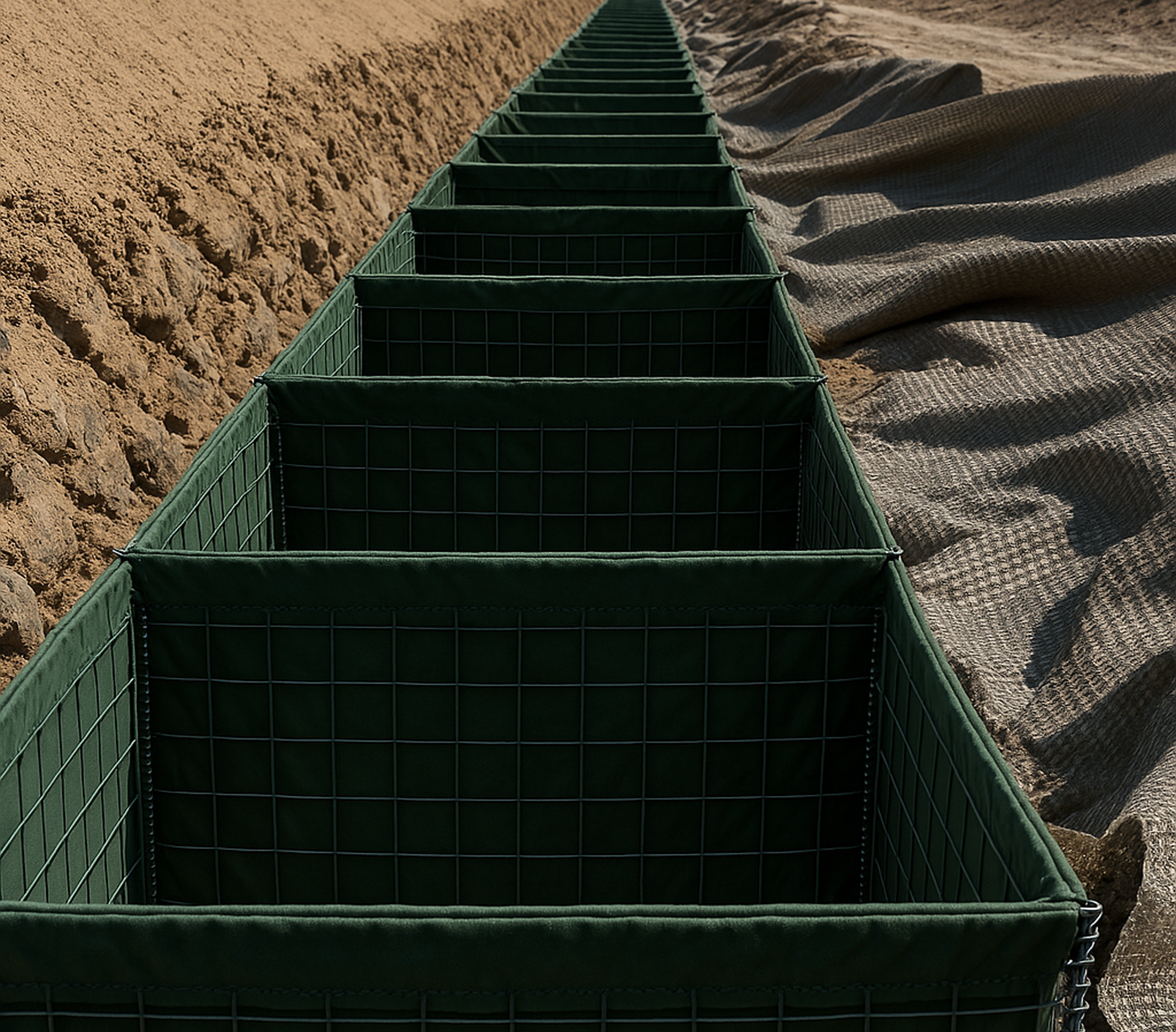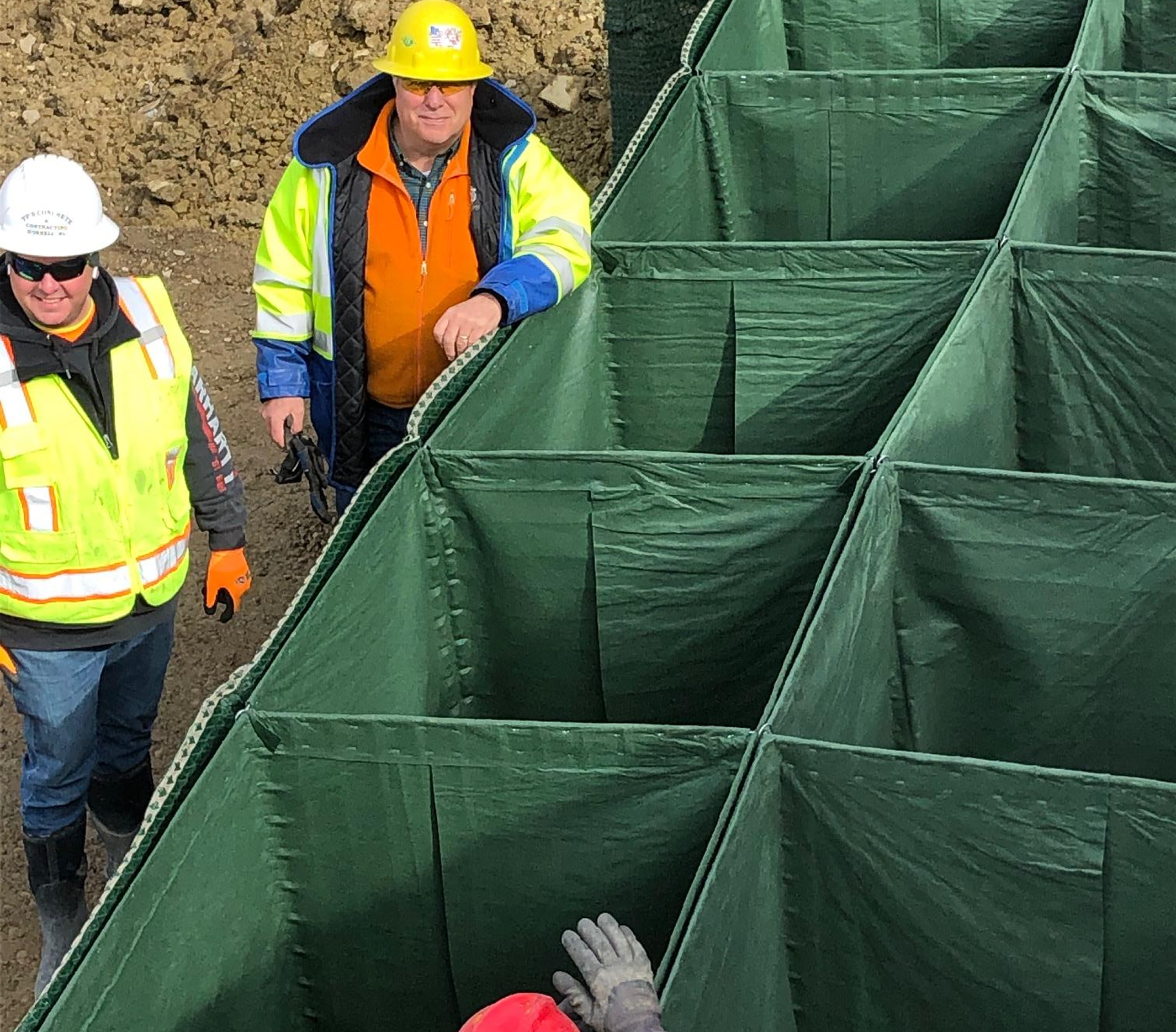Military bastion liners – advanced nonwoven for secure perimeter defense
Weak barrier materials expose troops and civilians to threats
Bastions form a critical part of perimeter defense in conflict zones or high-risk areas. They typically involve metal mesh baskets lined with fabric, then filled with sand, gravel, or soil. If the fabric liner tears or deteriorates under stress, particles can leak out, undermining the barrier’s integrity. Under direct fire or blasts, a compromised bastion provides less protection, endangering personnel, vehicles, and sensitive equipment.
Weak barrier materials expose troops and civilians to threats
Bastions form a critical part of perimeter defense in conflict zones or high-risk areas. They typically involve metal mesh baskets lined with fabric, then filled with sand, gravel, or soil. If the fabric liner tears or deteriorates under stress, particles can leak out, undermining the barrier’s integrity. Under direct fire or blasts, a compromised bastion provides less protection, endangering personnel, vehicles, and sensitive equipment.
Weak barrier materials expose troops and civilians to threats
Bastions form a critical part of perimeter defense in conflict zones or high-risk areas. They typically involve metal mesh baskets lined with fabric, then filled with sand, gravel, or soil. If the fabric liner tears or deteriorates under stress, particles can leak out, undermining the barrier’s integrity. Under direct fire or blasts, a compromised bastion provides less protection, endangering personnel, vehicles, and sensitive equipment.
.jpeg)
.jpeg)

.jpeg)
.jpeg)


Continual exposure to the sun, wind, and unpredictable weather further stresses these structures. Low-grade liners might also fail to withstand the constant friction of gravel or shifting soil, causing them to fray or develop holes. Repairing or replacing large sections of bastion lining in a conflict zone is dangerous, time-consuming, and can leave a base vulnerable during the operation.
Dependable bastions maintain safety and mission readiness

When a bastion stands firm, it shields people and critical assets from shrapnel, bullets, or blasts. The confidence in perimeter security frees troops to focus on other crucial tasks rather than constantly reinforcing walls. A stable barrier also reduces the risk of water erosion or structural collapse during harsh weather conditions. If heavy rain soaks the fill material, a robust liner prevents significant washouts, ensuring the barrier retains its shape and protective capacity.
Longer-lasting liners translate to less frequent maintenance or rebuilding efforts. Military engineers can allocate resources elsewhere, reinforcing other sections of a base or channeling funds toward improved living conditions for personnel. By preventing breakdowns in fortifications, a solid bastion helps maintain mission momentum and public safety in the surrounding region.
Weak barrier materials expose troops and civilians to threats
Bastions form a critical part of perimeter defense in conflict zones or high-risk areas. They typically involve metal mesh baskets lined with fabric, then filled with sand, gravel, or soil. If the fabric liner tears or deteriorates under stress, particles can leak out, undermining the barrier’s integrity. Under direct fire or blasts, a compromised bastion provides less protection, endangering personnel, vehicles, and sensitive equipment.
Dependable bastions maintain safety and mission readiness
When a bastion stands firm, it shields people and critical assets from shrapnel, bullets, or blasts. The confidence in perimeter security frees troops to focus on other crucial tasks rather than constantly reinforcing walls. A stable barrier also reduces the risk of water erosion or structural collapse during harsh weather conditions. If heavy rain soaks the fill material, a robust liner prevents significant washouts, ensuring the barrier retains its shape and protective capacity.
Longer-lasting liners translate to less frequent maintenance or rebuilding efforts. Military engineers can allocate resources elsewhere, reinforcing other sections of a base or channeling funds toward improved living conditions for personnel. By preventing breakdowns in fortifications, a solid bastion helps maintain mission momentum and public safety in the surrounding region.

.jpeg)
.jpeg)

.jpeg)
.jpeg)
.jpeg)
.jpeg)
.jpeg)

How NICOLON nonwoven bastion liners reinforce defense
NICOLON nonwoven fabrics excel in bastion applications thanks to their ability to resist punctures, UV exposure, and abrasion. The fabric’s tensile strength keeps sand or gravel in place under immense pressure. Reinforced edges ensure a secure fit within the metal framework, eliminating weak points where fill could seep out. Because the nonwoven textile is also breathable, water accumulation within the bastion is minimized, reducing the potential for structural weakening due to trapped moisture.
These liners are manufactured to tight specifications in ISO-accredited facilities, matching the military’s demand for consistent, proven performance. Even after repeated deployments or lengthy stationing, NICOLON’s protective qualities remain reliable. With flame-retardant options available, the fabric can endure high temperatures or accidental sparks. This thorough design approach gives front-line troops and security forces confidence that their bastions will not fail under the toughest conditions.




Key benefits
High puncture resistance
Stands up to gravel, shrapnel, and shifting materials
UV-stabilized
Maintains strength under prolonged sun exposure
Abrasion-resistant
Handles friction and movement without tearing
Breathable structure
Allows water drainage and prevents hydrostatic pressure
Flexible fitting
Accommodates different bastion sizes and designs
Military-grade durability
Consistent performance even in active conflict zones
Resources
Heading 3
Heading 3

.png)





